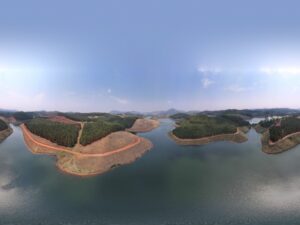The South African Institution of Civil Engineering (SAICE) has expressed it sadness by the collapse of an embankment at the Jagersfontein mine’s Tailing Storage Facility (TSF), in the Free State earlier this month.
SAICE also calls for all stakeholders in the civil, mining and geotechnical engineering environments, across various sectors, to mobilise their resources, knowledge and engineering capacity to prevent similar disasters in the future. The collapse came at a time when the Tailings industry worldwide is adjusting to the most recent international standards as set out in the “Global Industry Standard on Tailings Management” (GISTM) published in August 2020. The GISTM is said to provide a framework for safe TSF management of operational, decommissioned, and closed tailings facilities with the aim of achieving zero harm to people and the environment. This incident highlights several underlying issues impacting the country’s tailings management and regulating environment.- Outdated standards and regulations on TSF management being the first concern that plagues the South African Tailings industry. The current most relevant standard related to TSF design, operations, monitoring and maintenance is the South African Bureau of Standards Code of Practice for Mine Residue, SABS 0286, which was promulgated in 1998 following the Merriespruit TSF failure in 1994. While this document has served the industry well, it has not been updated since and remains the South African standard on the management of tailings facilities.
It further said that although many of South Africa’s tailings engineers and mine owners strive to adopt and conform to international best practices and standards, such as the GISTM, strict governance in this regard remains a concern and not all mines have formally adopted this standard.
SAICE also said there is limited information is currently available on the Jagersfontein TSF failure, and therefore making it nearly impossible to speculate the cause of the failure on that Sunday morning. It hopes that the investigations will give a more detailed insight, and the industry will take this as a learning curve.- Tailings engineering skills and capacity are at a critical shortage in the public sector, when it comes to TSF design, operation, monitoring and management. Engineers with the required knowledge and skills have not been employed by regulatory bodies that have oversight of these facilities, SAICE said.
- Competent engineers should be involved throughout the entire lifecycle of a TSF, such as the Jagersfontein mine. South Africa has world-class civil engineering professionals. The successful design, operation, monitoring and management of a TSF requires a multi-disciplinary team of engineers who needs to be closely involved in how we engineer solutions related to each TSF, SAICE said.








